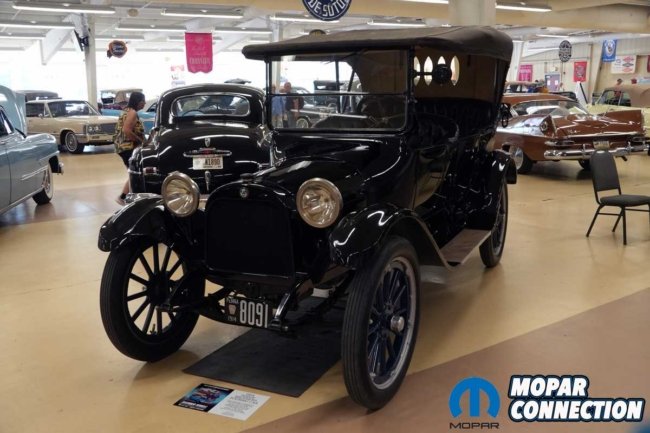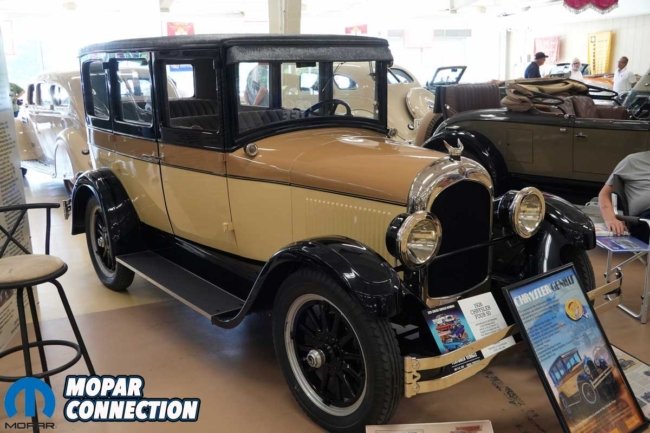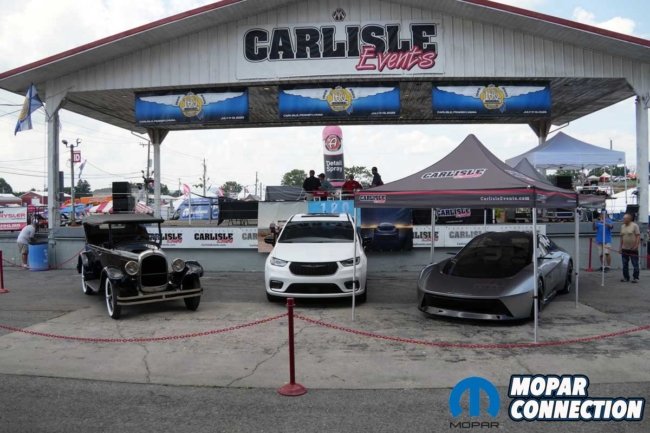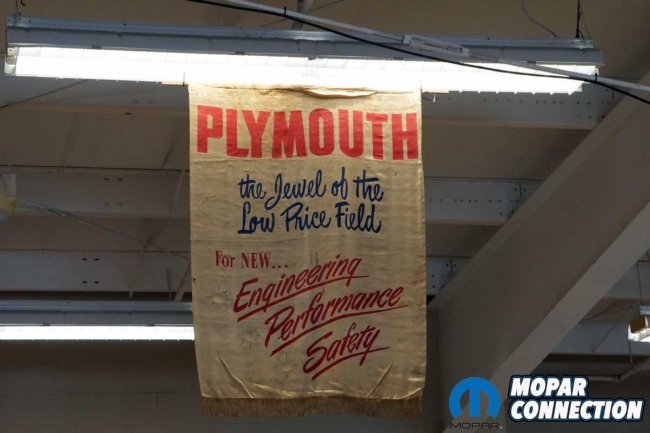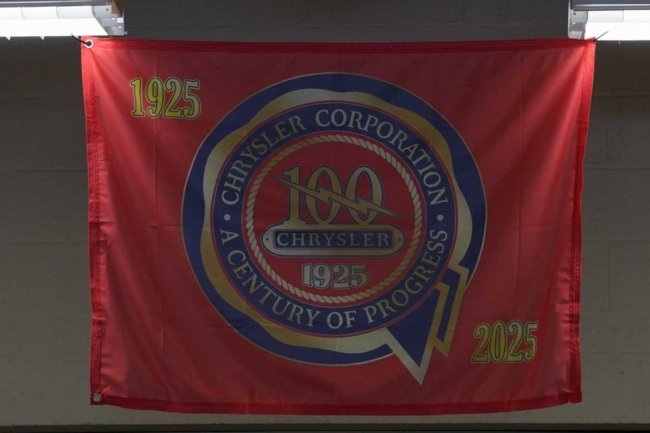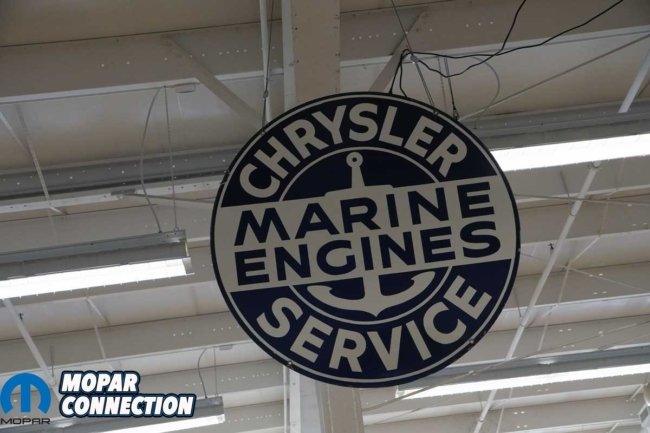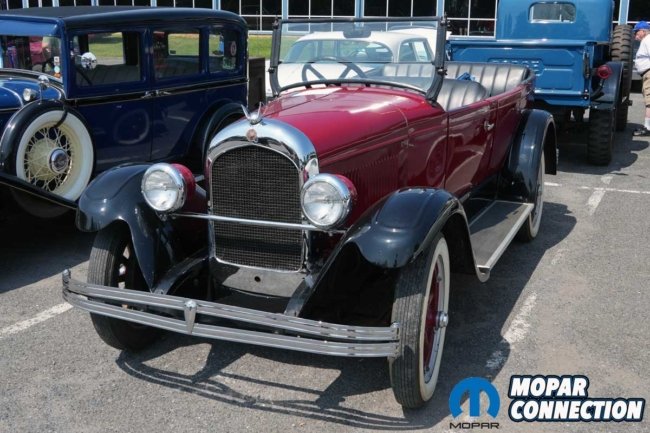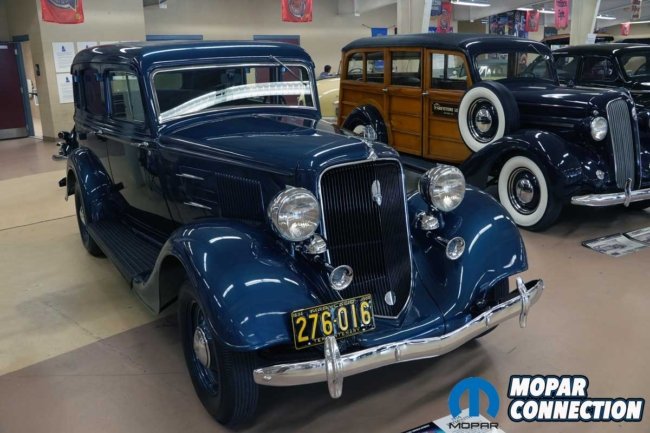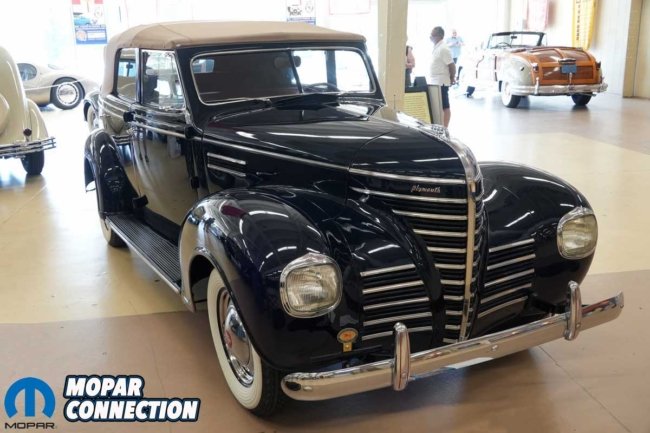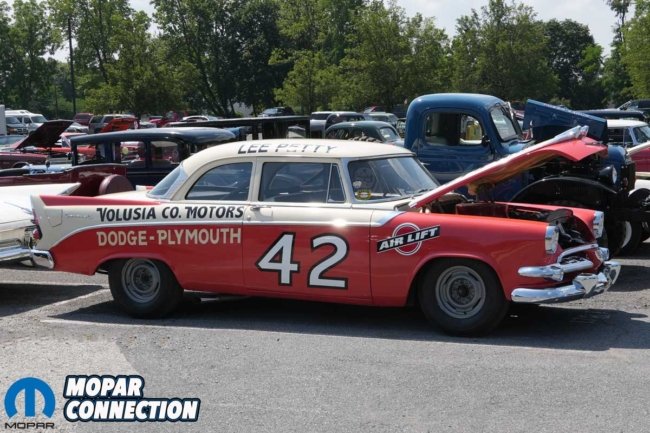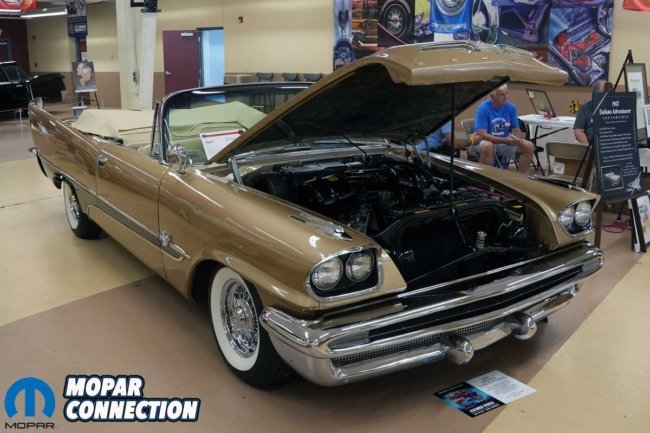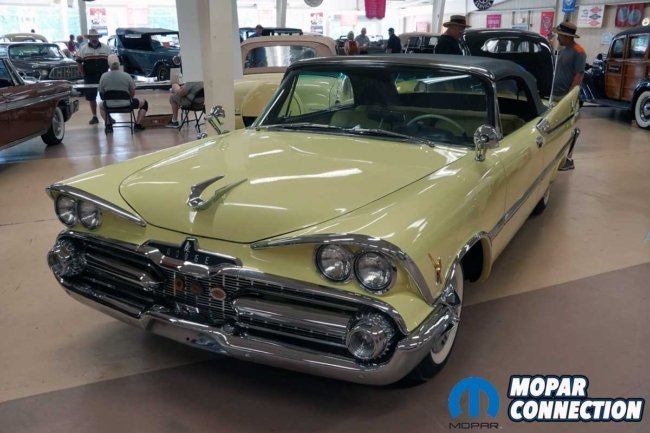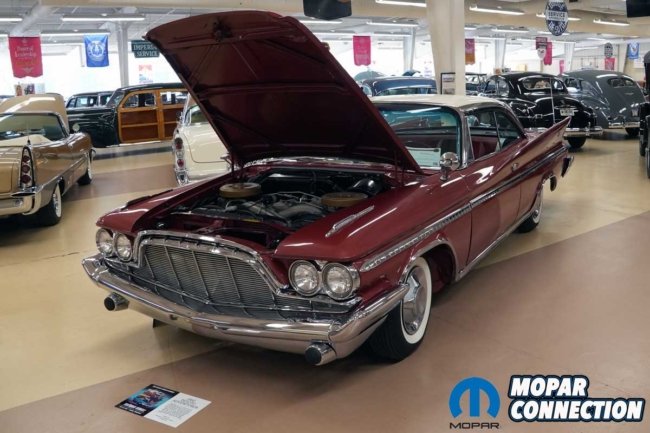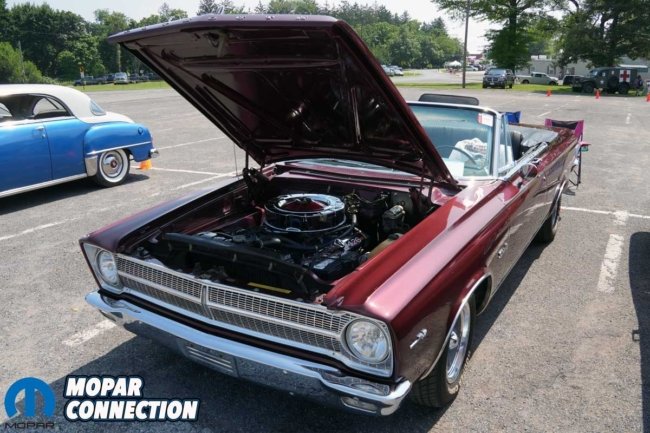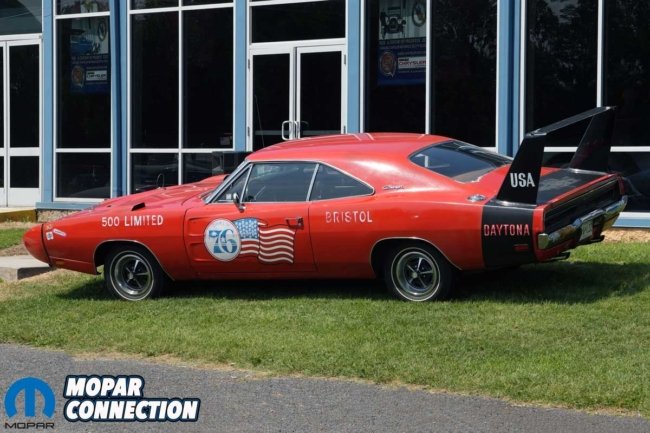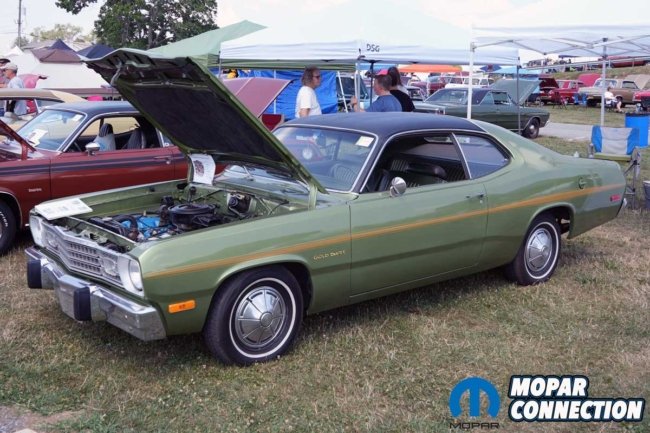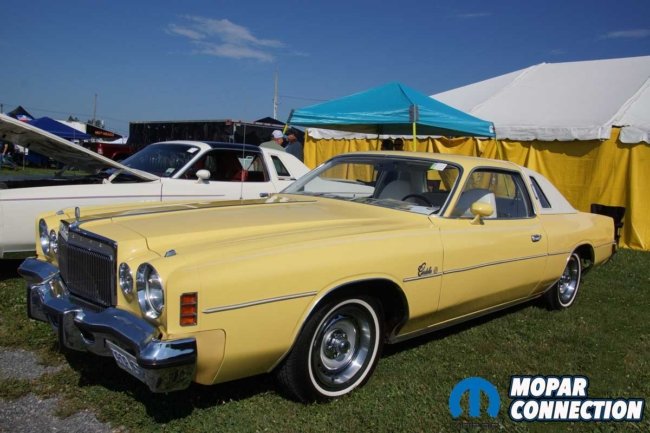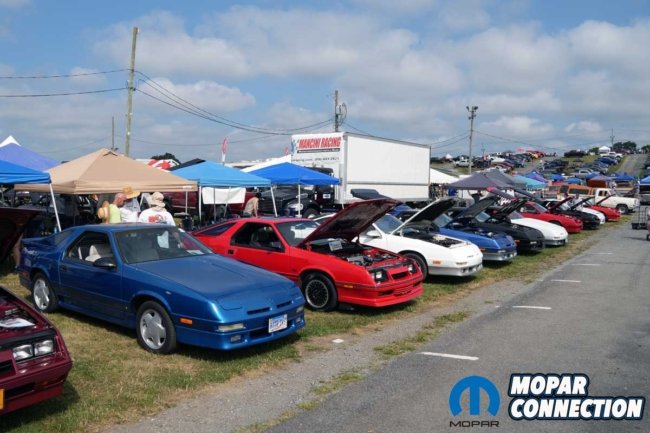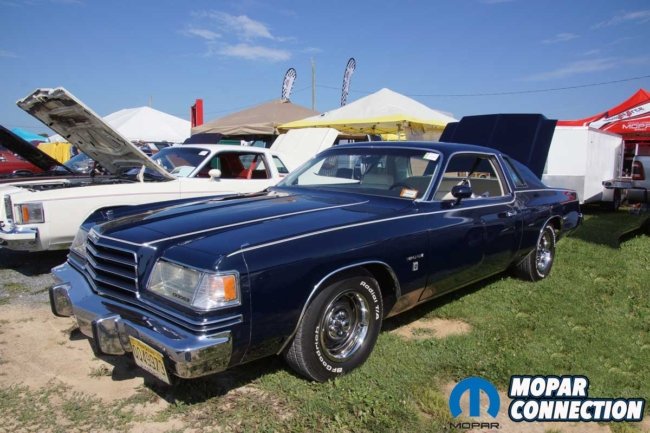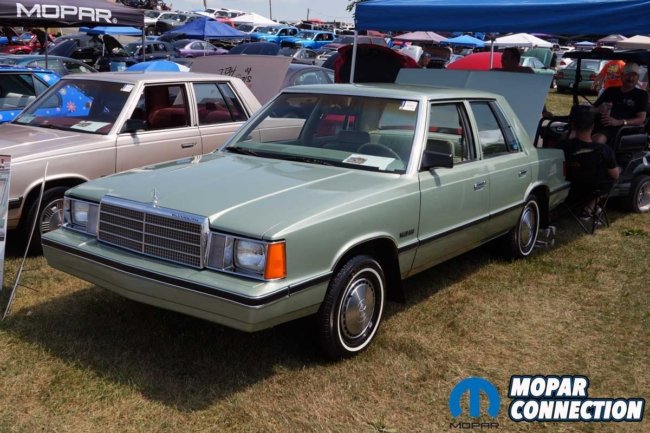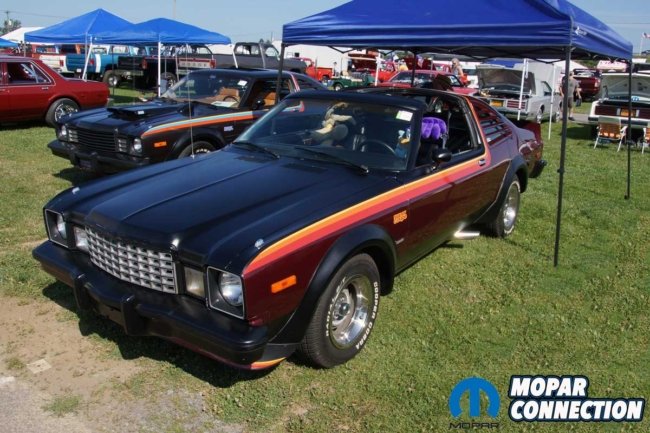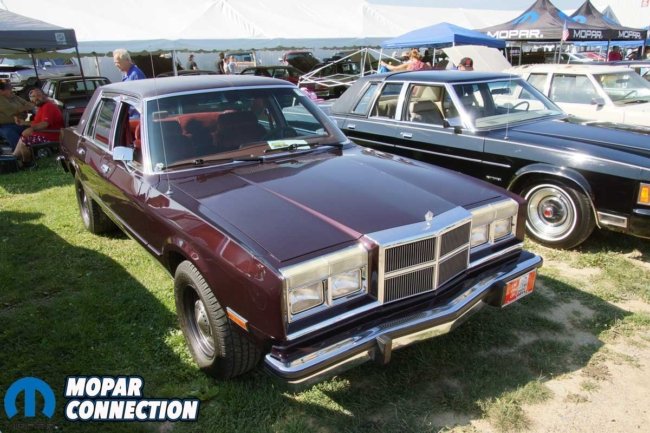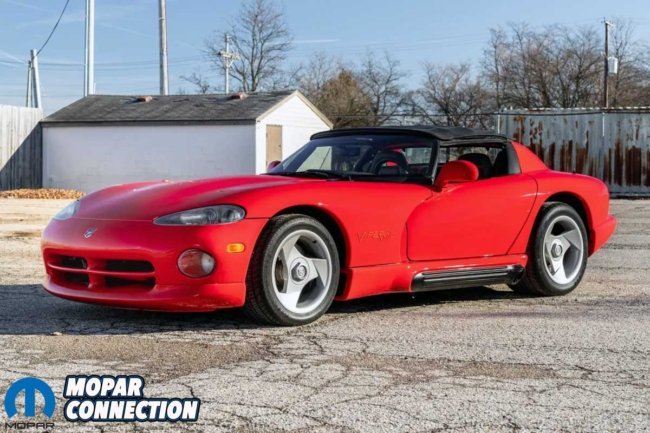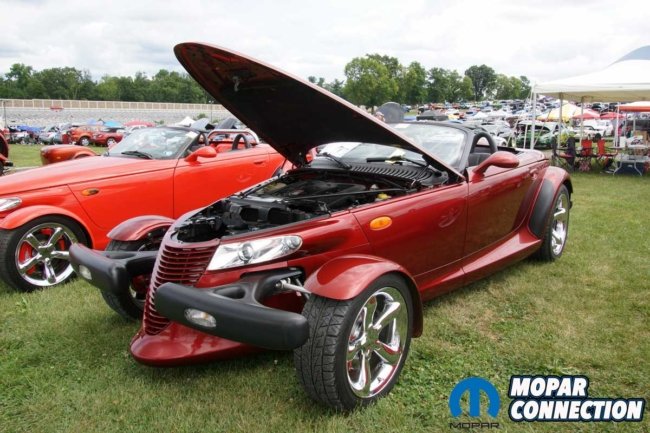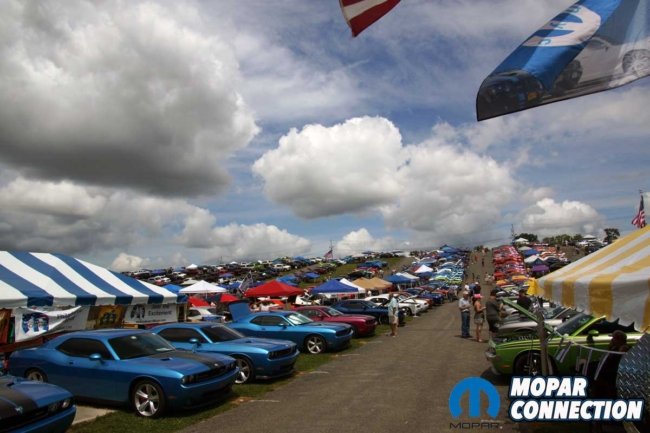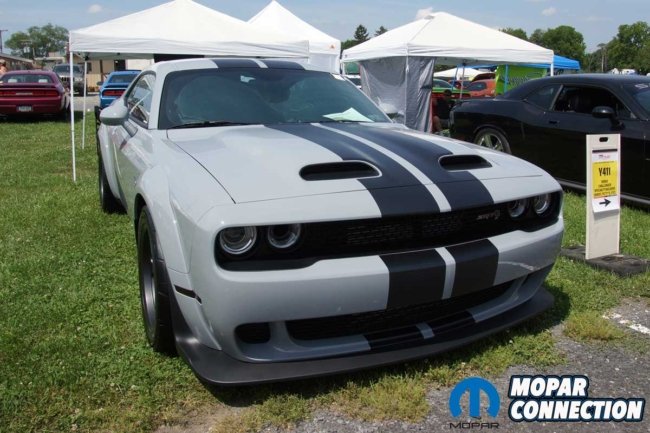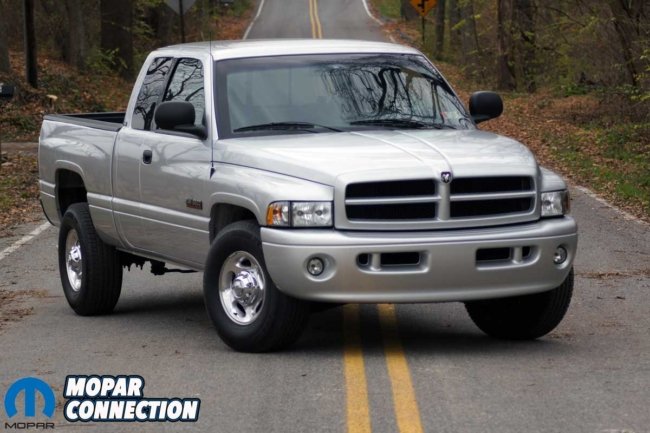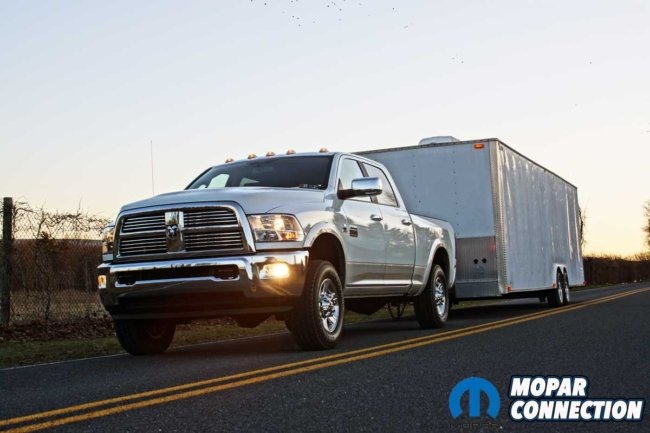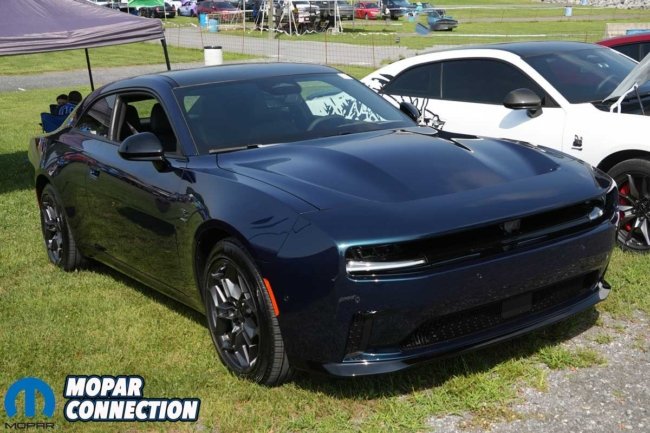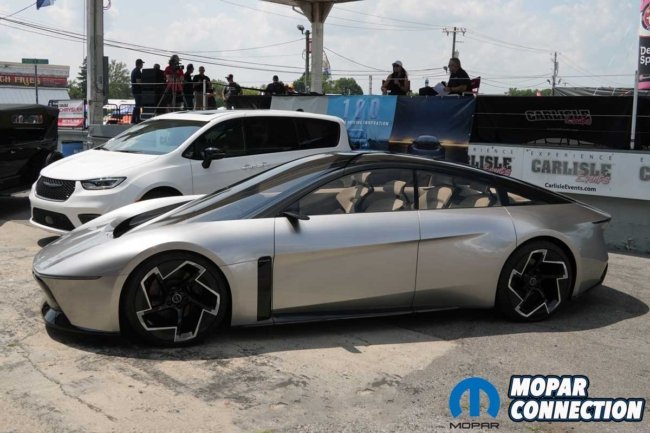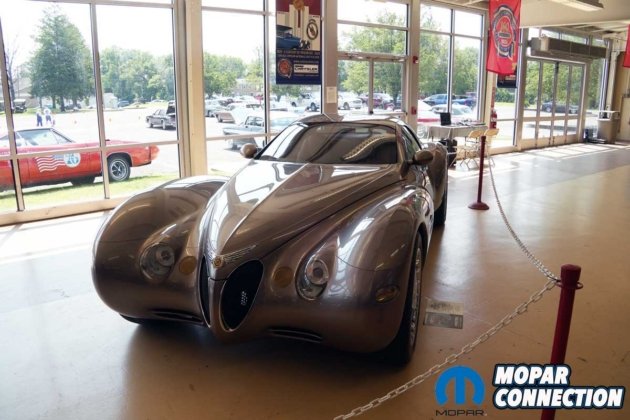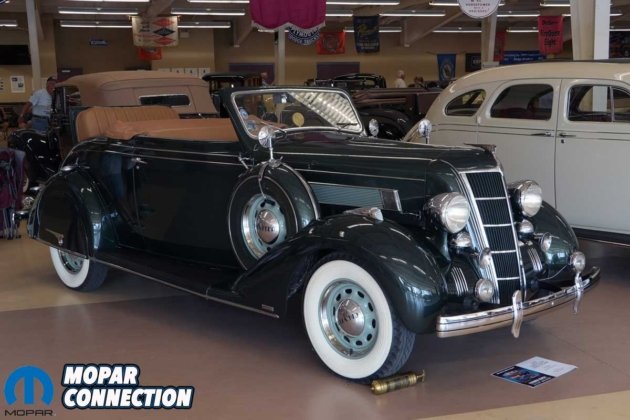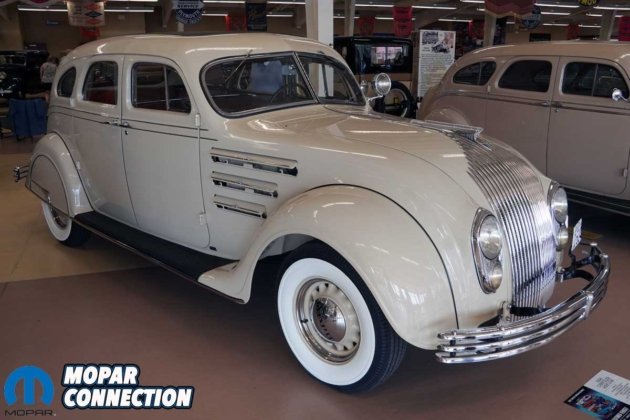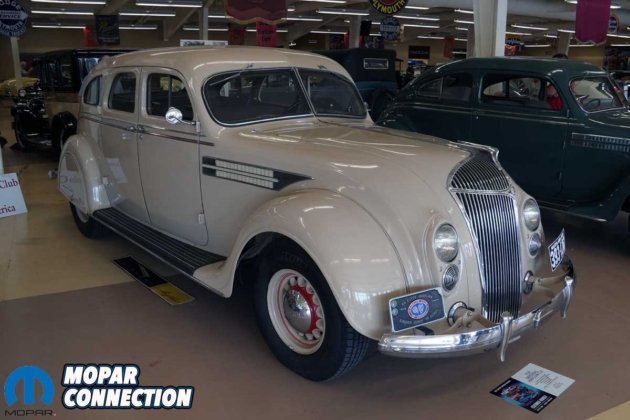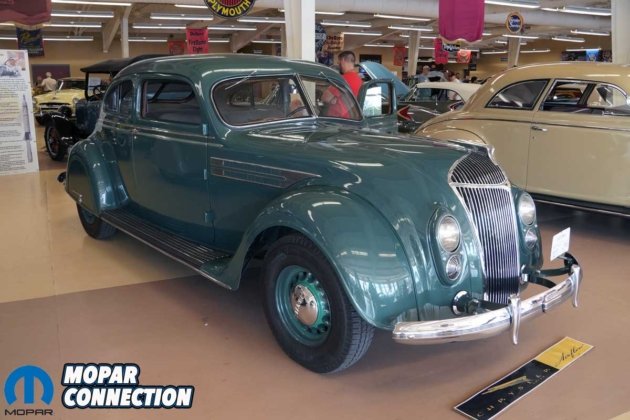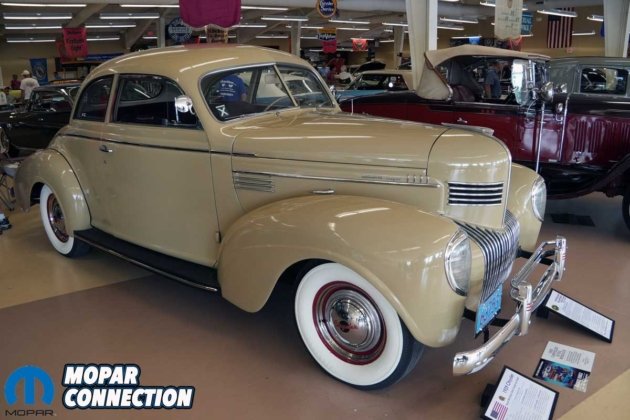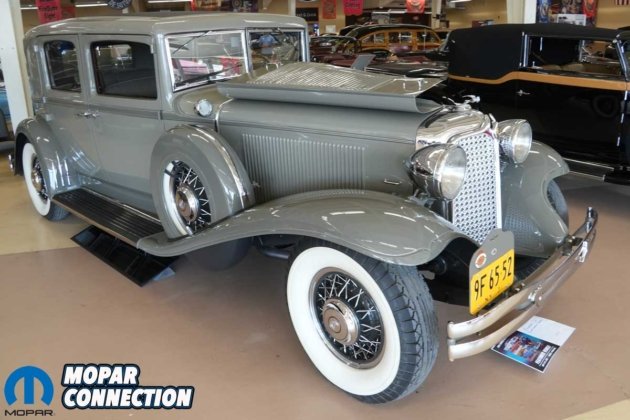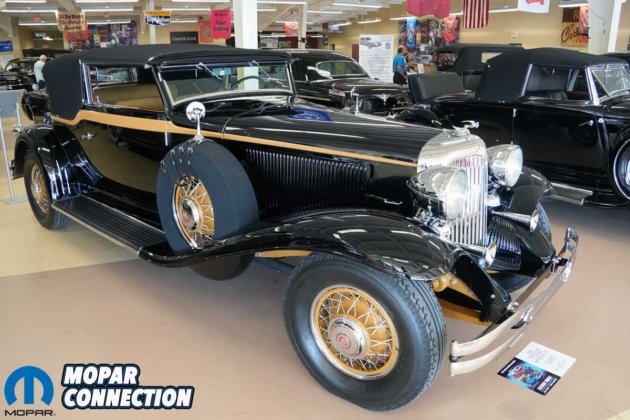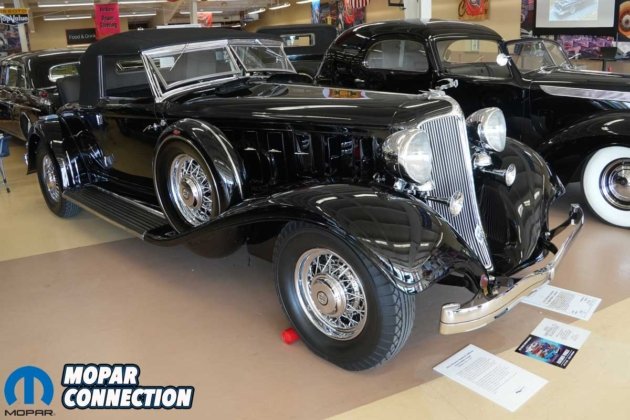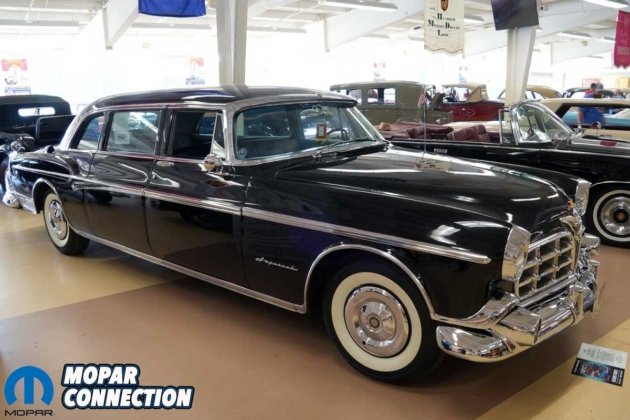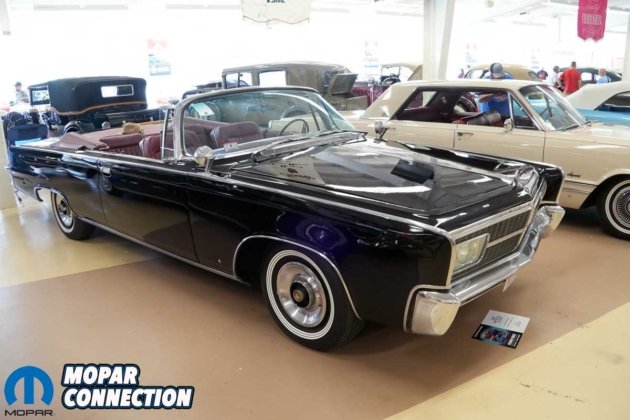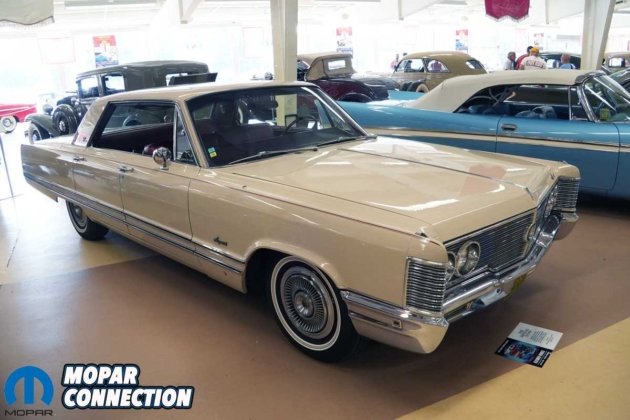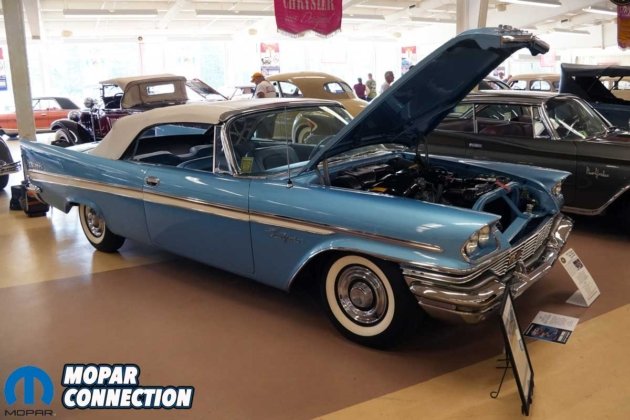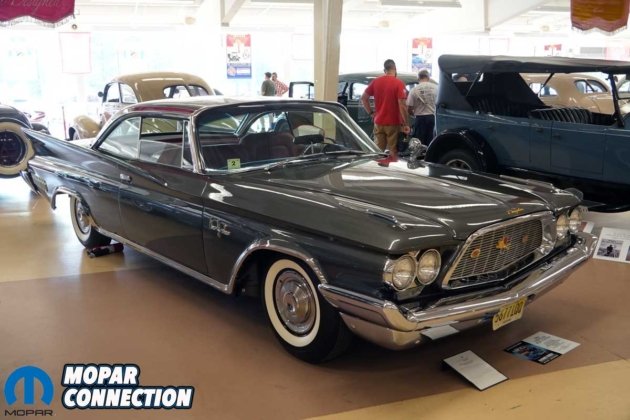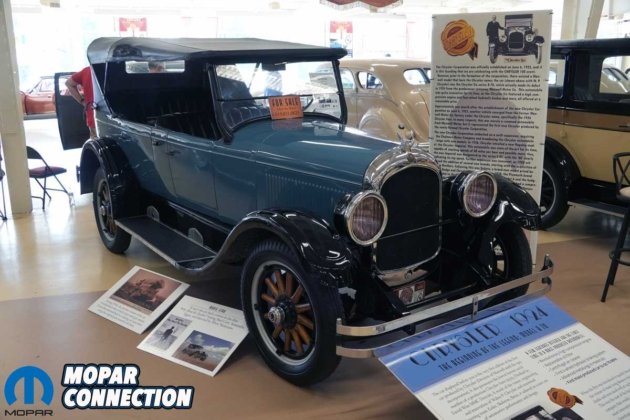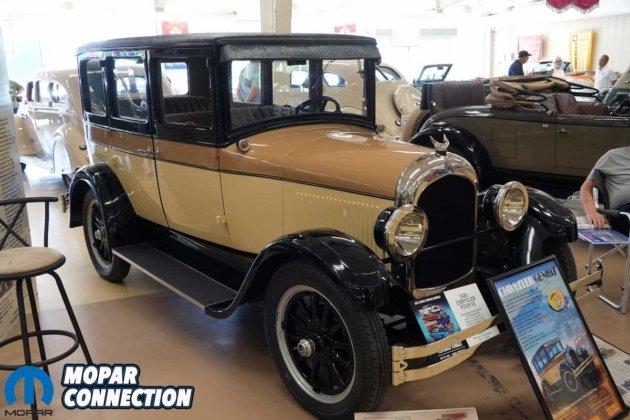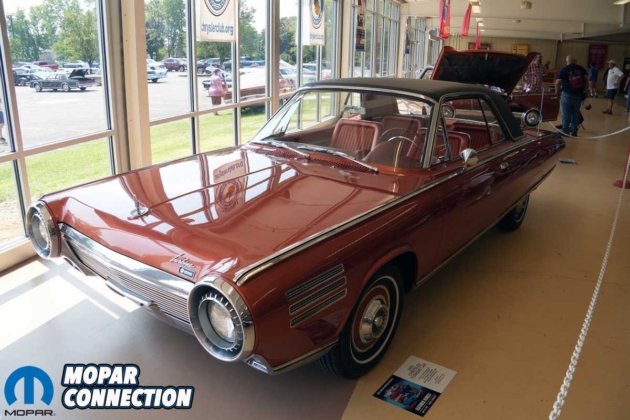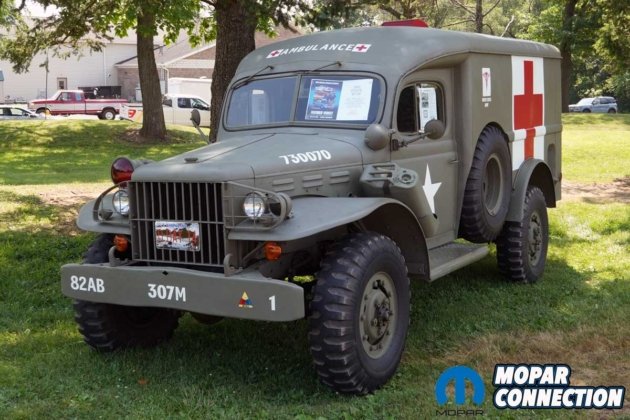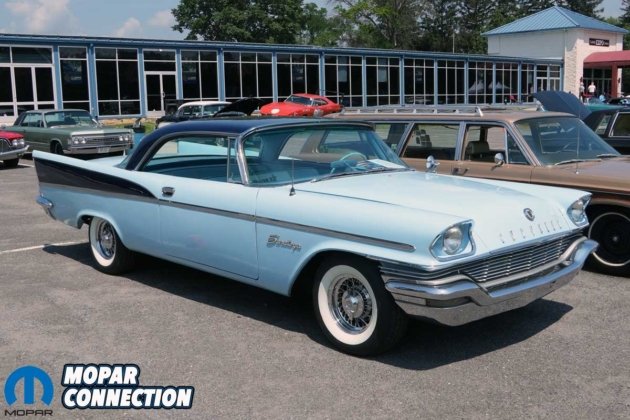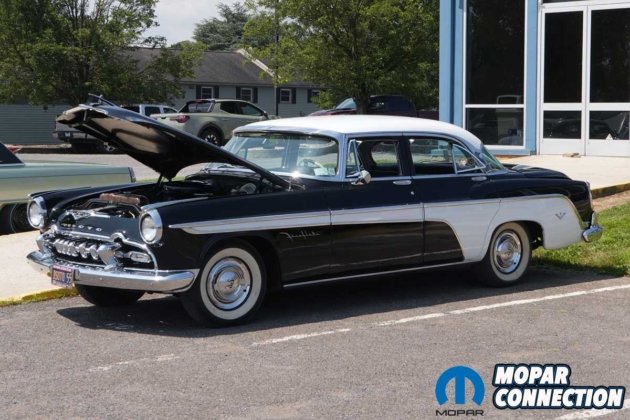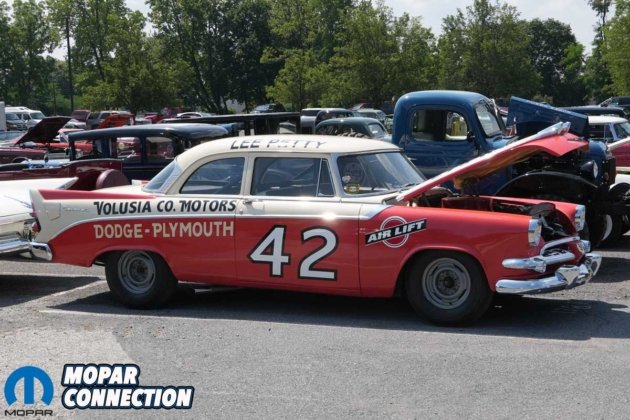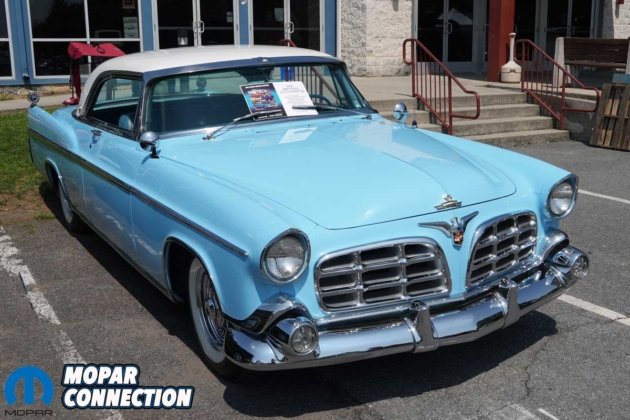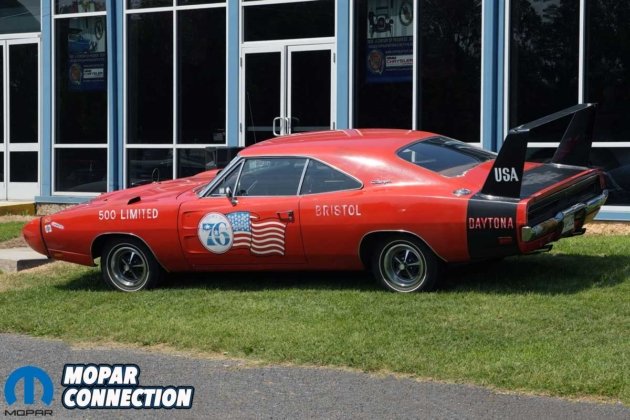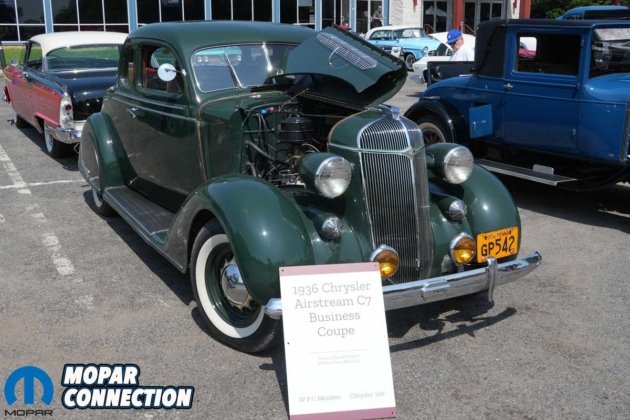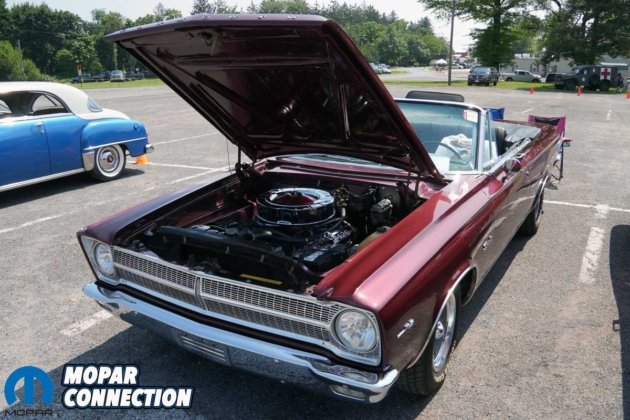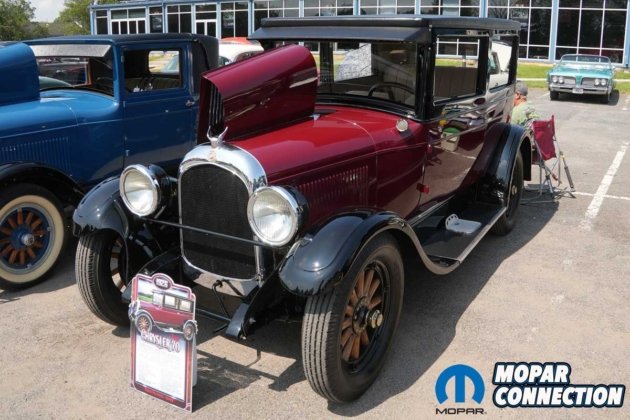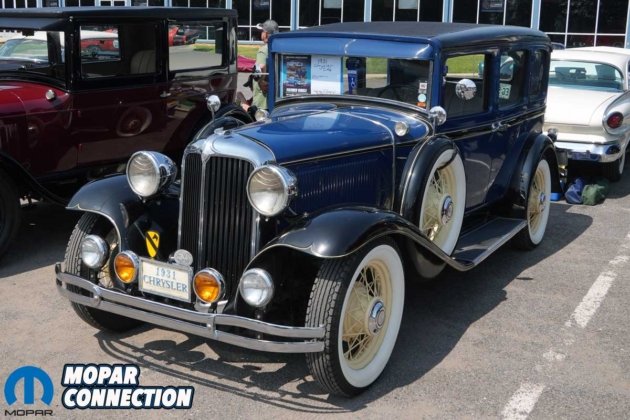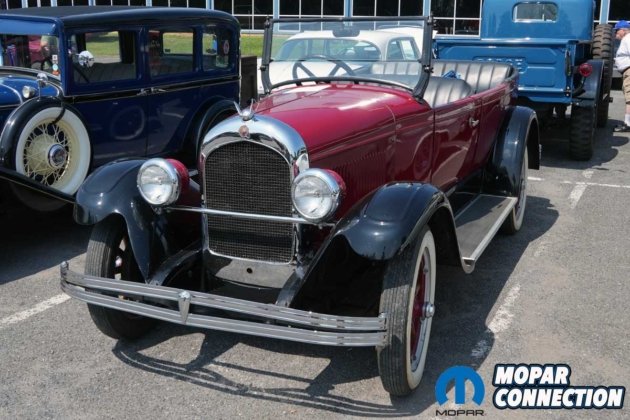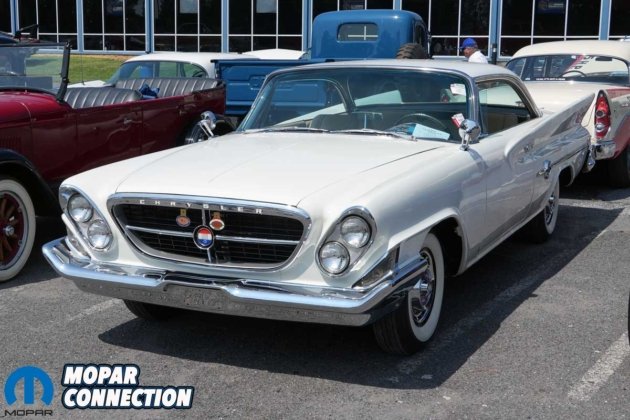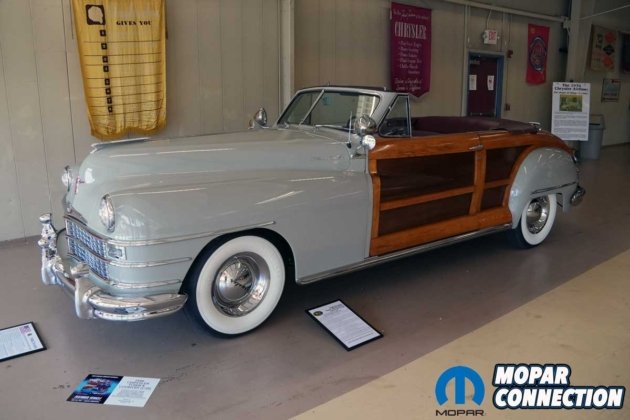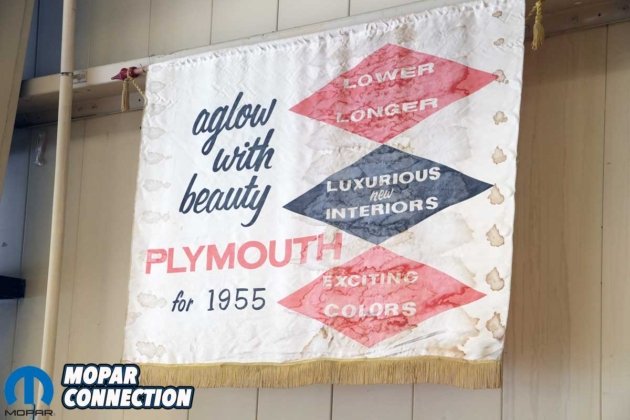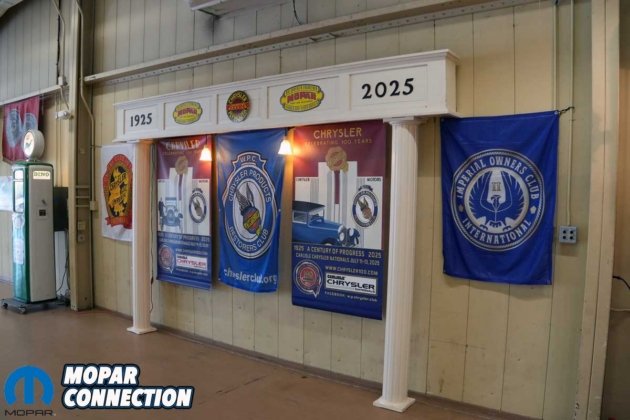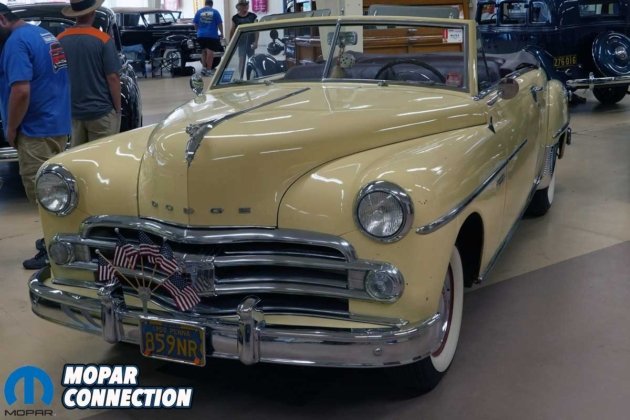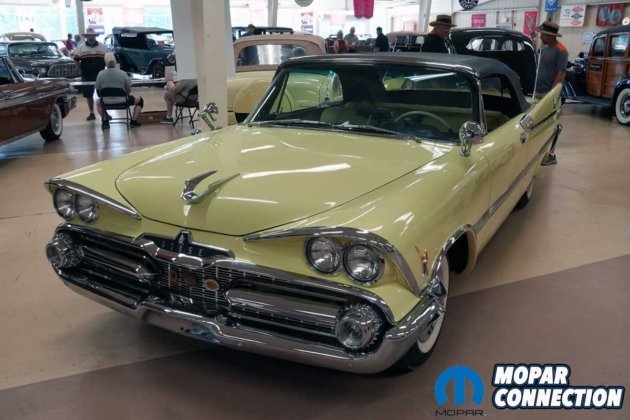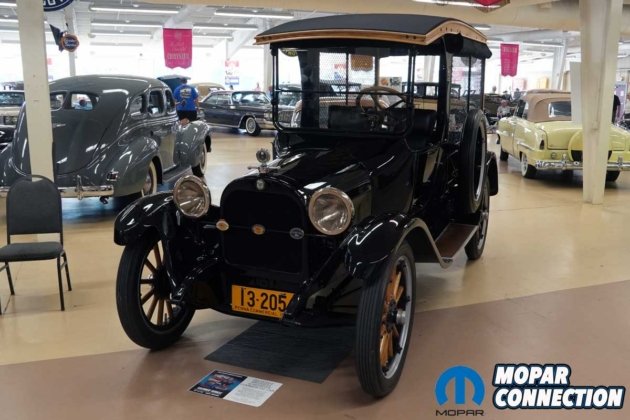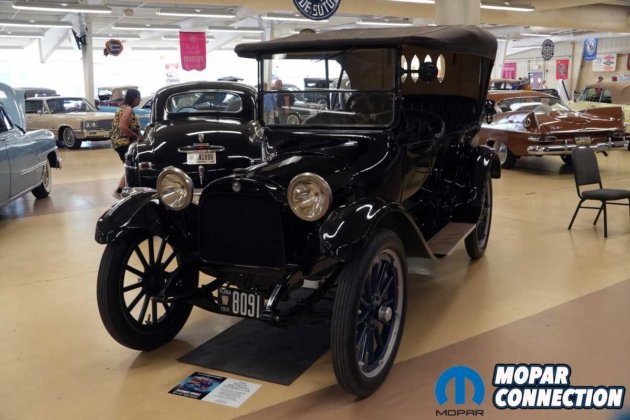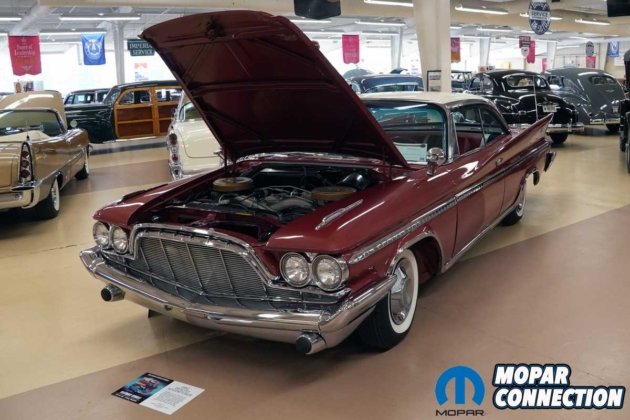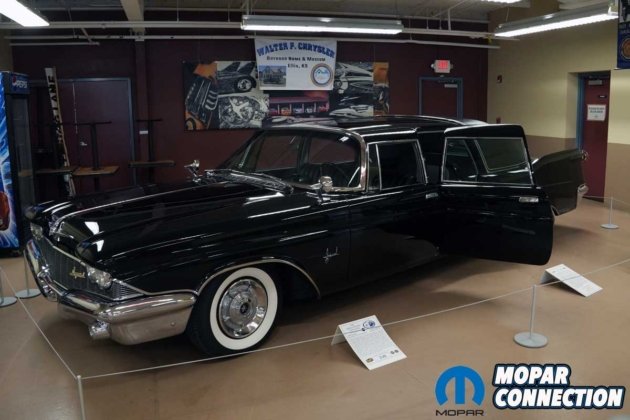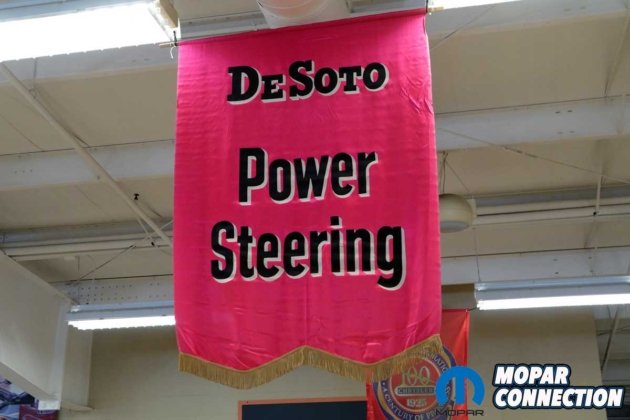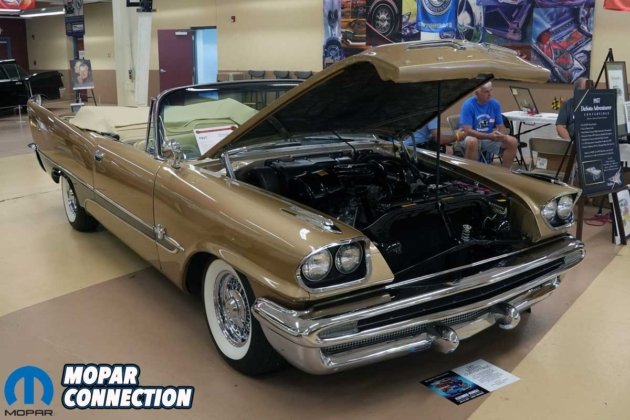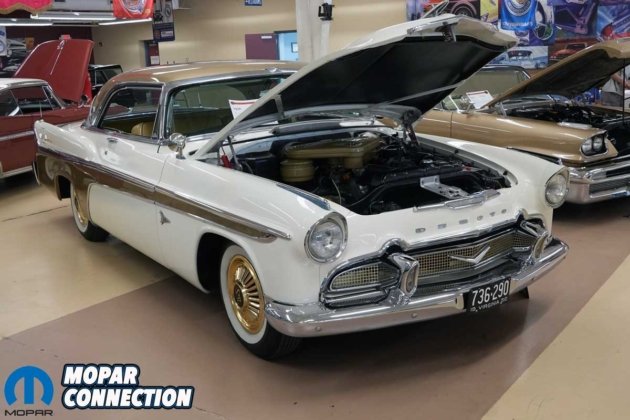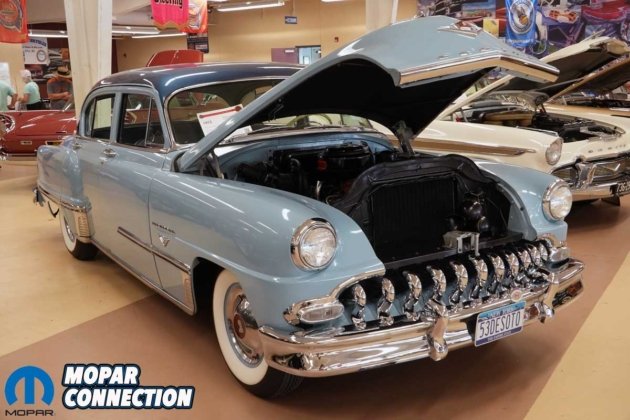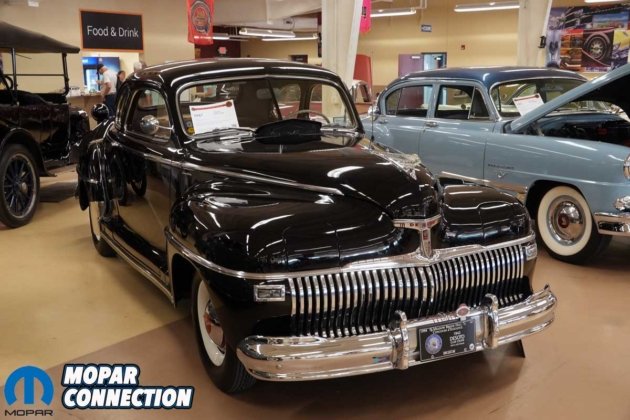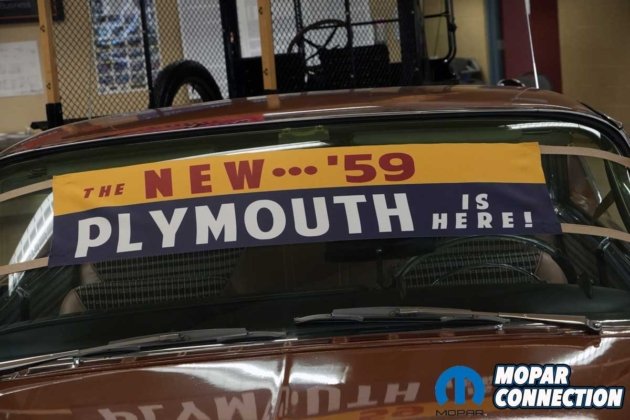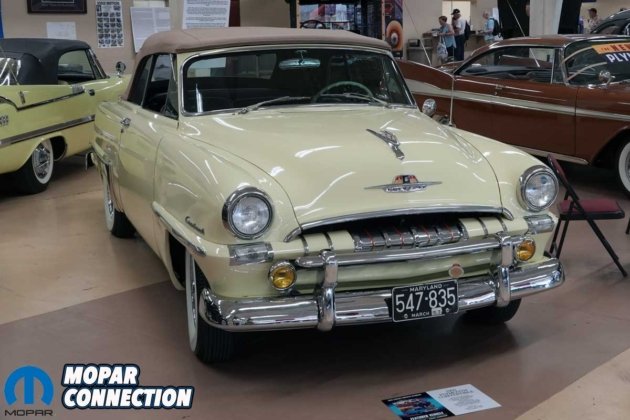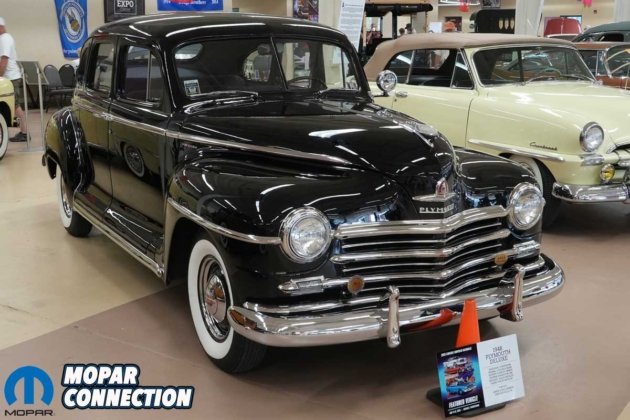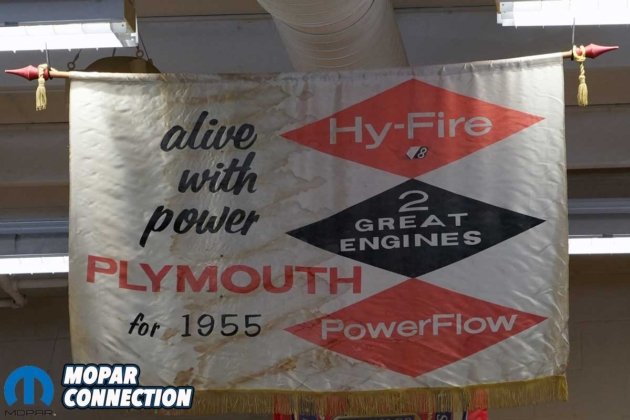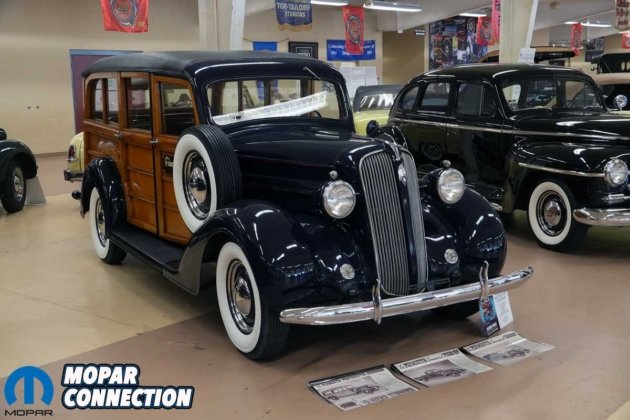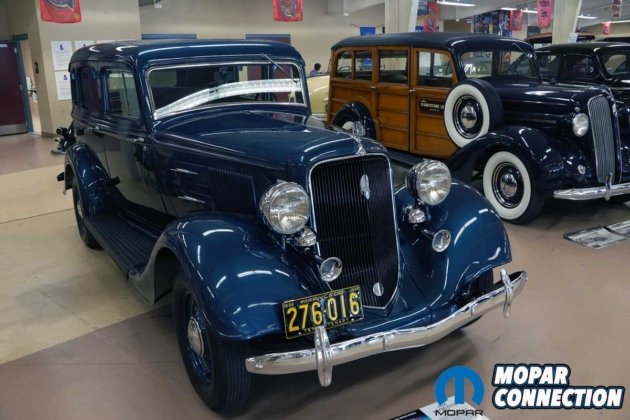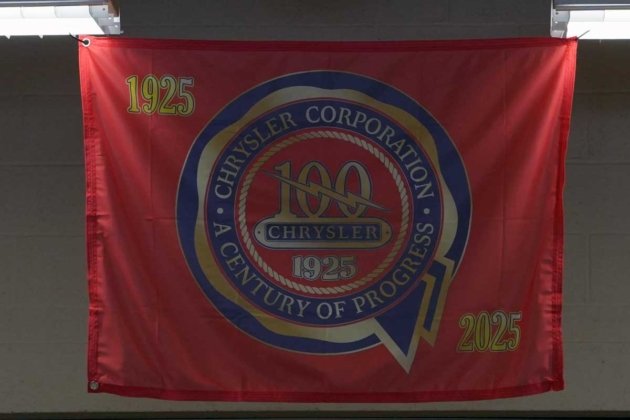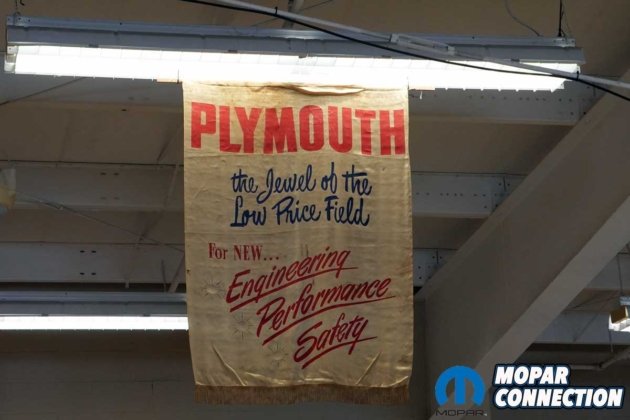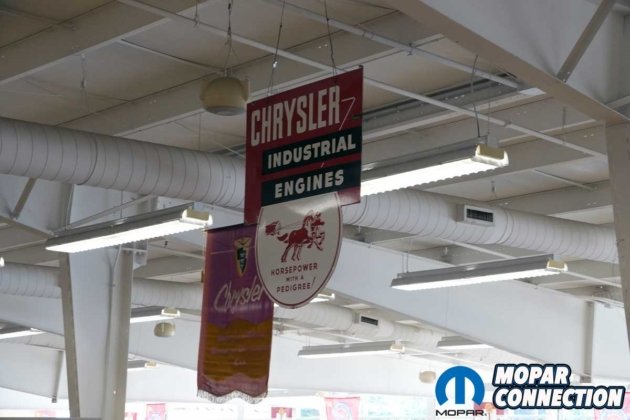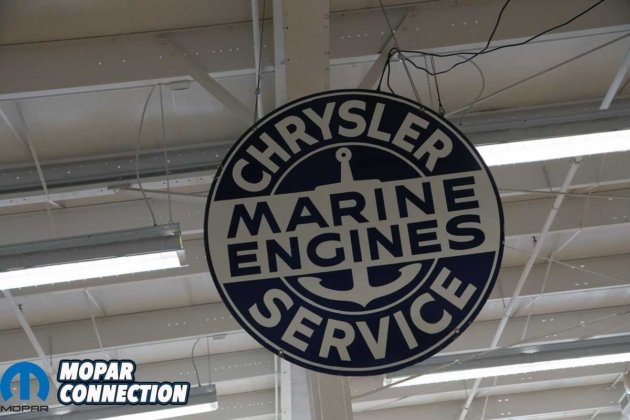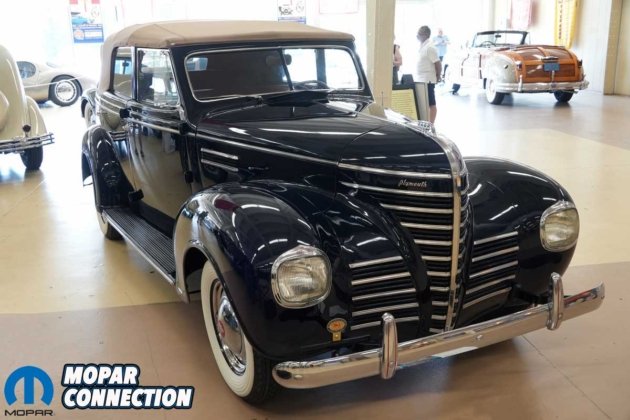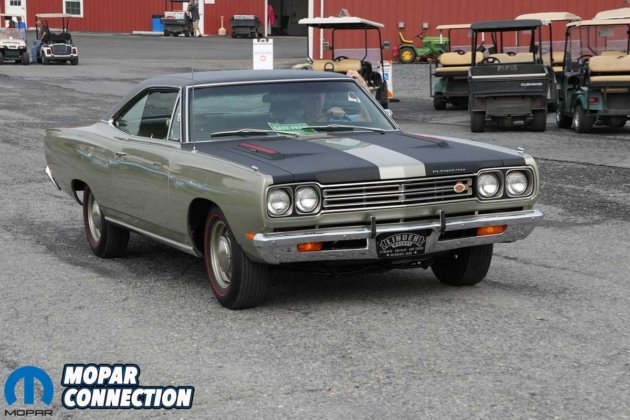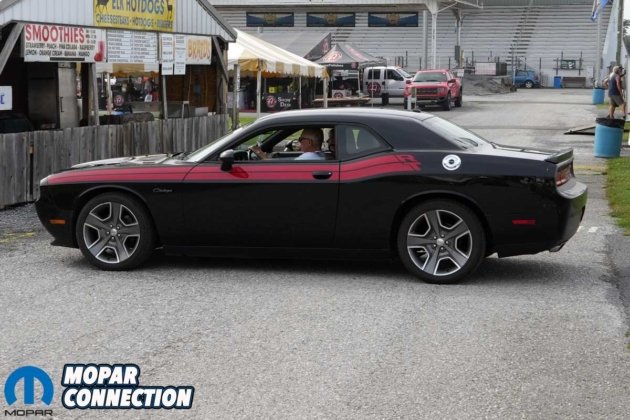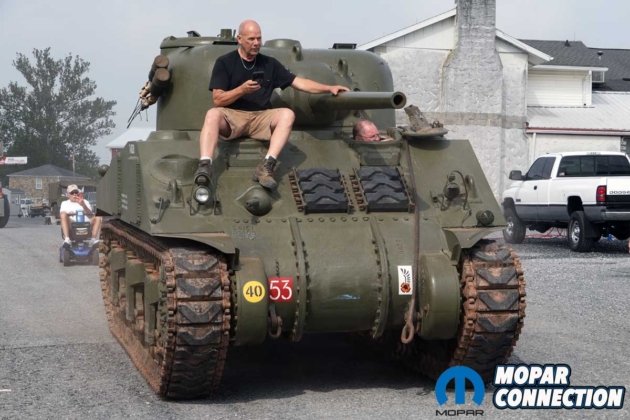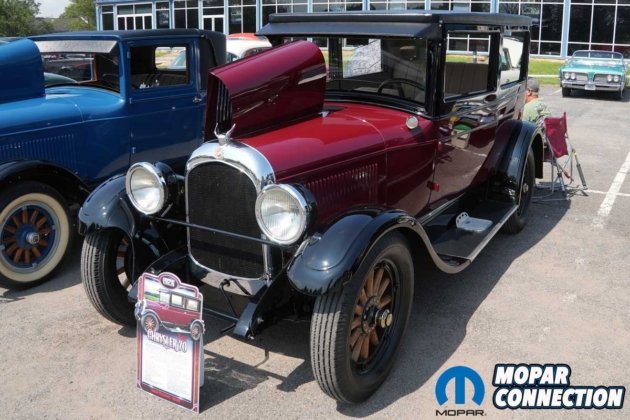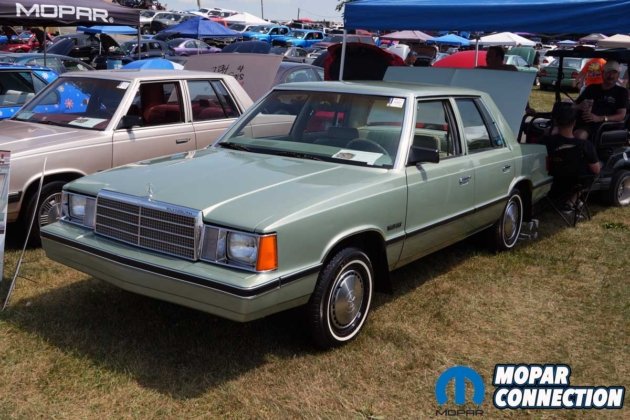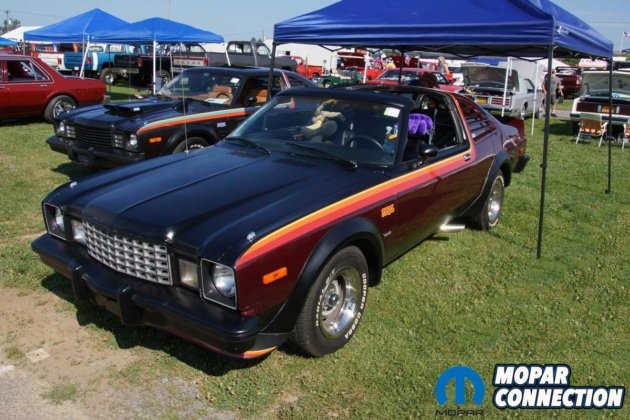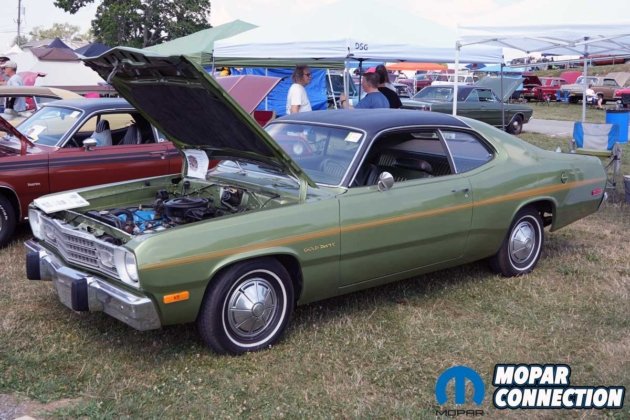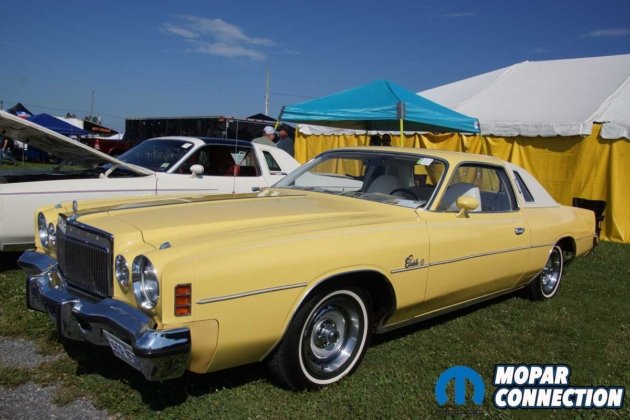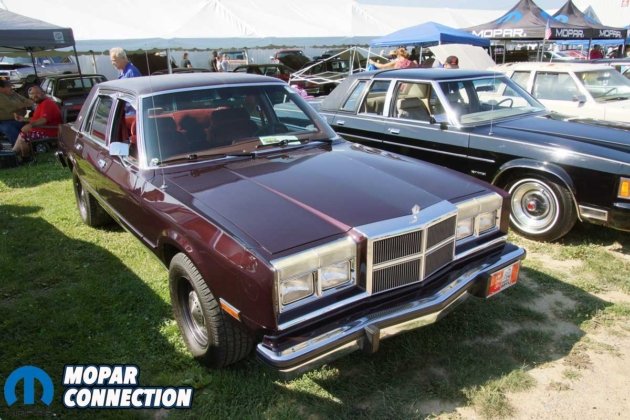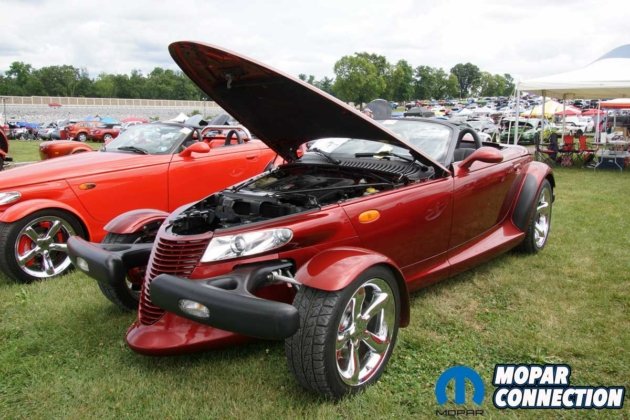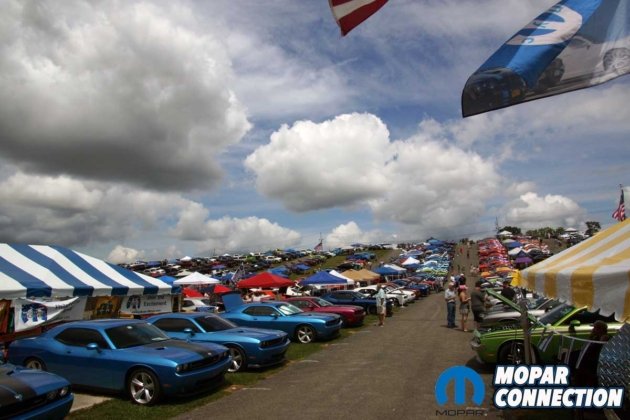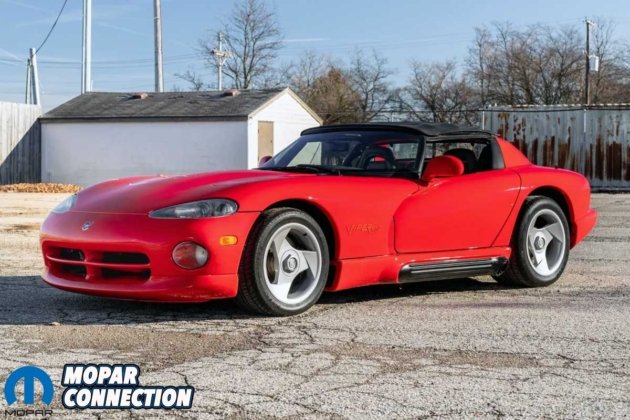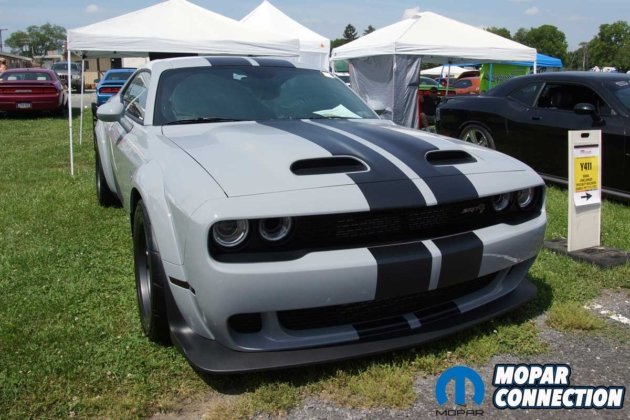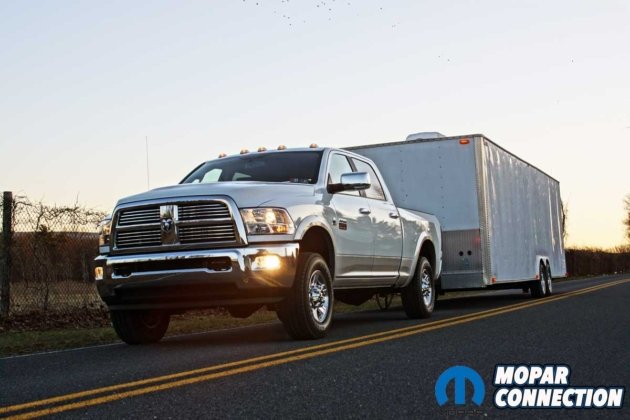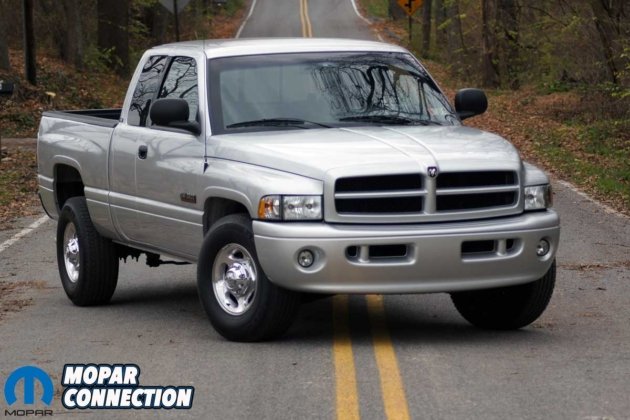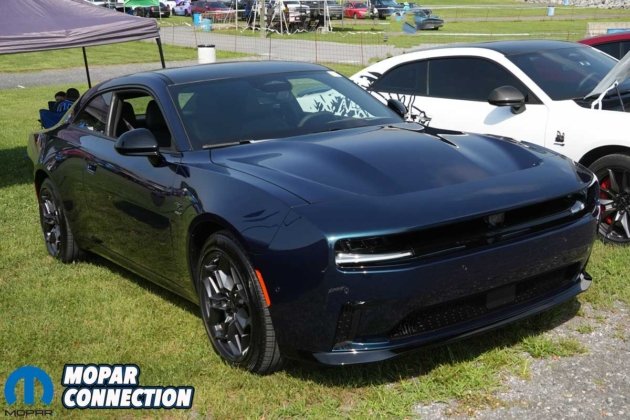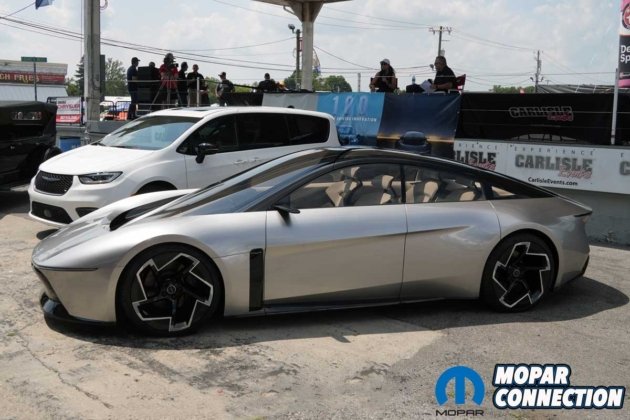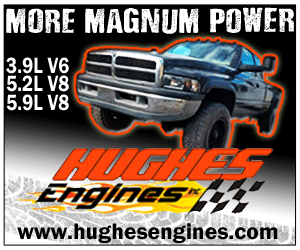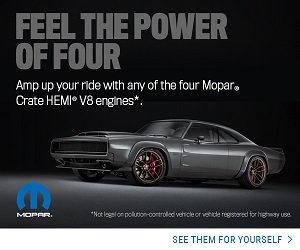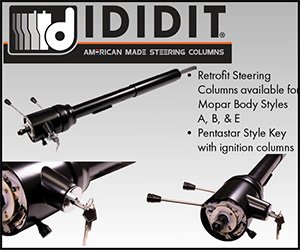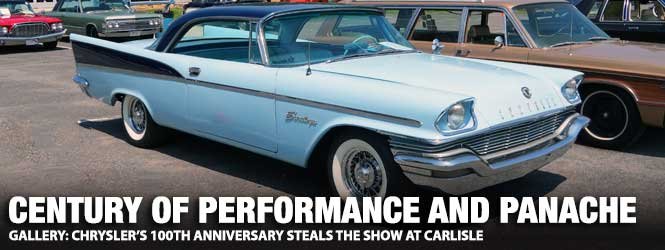
If there ever was a fitting place to celebrate a century of Chrysler, it was on the rolling green fairgrounds of central Pennsylvania, home to the Carlisle Chrysler Nationals and one of the world’s largest gatherings of Mopar machinery. And for the company’s 100th anniversary this summer, Chrysler not only showed up, but it also made history.
Just steps away, inside the Carlisle Expo Center, the Walter P. Chrysler Club hosted a remarkable extended exhibit with participation from Frank Rhodes, great-grandson of Walter P. Chrysler. The display featured vintage automobiles, historical heirlooms, and memorabilia, including design sketches, engineering blueprints, and even Chrysler’s military contributions, reminding visitors that the company’s heritage goes far beyond the showroom floor.
In a historic first, Chrysler Brand CEO Chris Feuell took the main stage on Friday, July 11, for a live Q&A session with event emcee Mike Garland. Feuell spoke frankly about the brand’s heritage, existing strategy, and future endeavors, drawing strong reactions from an energetic audience.
She emphasized Chrysler’s vision of delivering performance and affordability, even as the company pivots toward electrification. However, it was her surprise announcement —the return of the legendary SRT (Street and Racing Technology) division —that sent tremors through the Mopar faithful. Cheers erupted from the enthusiasts, corroborating the move as a highlight of the weekend. The entire Q&A exchange can be seen at The Mopar Junkie.
On Saturday evening, July 12, Chrysler made more history with Carlisle’s first-ever downtown parade tied directly to the Nationals. Dozens of vintage and modern vehicles from DeSotos to Hellcats rolled through downtown Carlisle under Chrysler banners, cheered on by locals and visitors alike.
History of Chrysler
From its humble beginnings in 1924 to its bold pivot toward electrification in 2024, the Chrysler name has symbolized more than just automobiles; it has represented invention, diligence, and a unique slice of American identity. As the company celebrates its 100th anniversary, follow along as we take a journey through a century of engineering marvels, muscle cars, minivans, mergers, and modern reinvention.
Born from Boldness (1924–1930)
In the early 1920s, Walter P. Chrysler, a former railroad mechanic, was recruited to rescue the struggling Maxwell Motor Company. Instead, he transformed it. In 1924, the first Chrysler-branded car, the Chrysler Six, debuted at the New York Auto Show.
It was priced affordably, yet packed with features usually reserved for luxury cars, such as a high-compression six-cylinder engine, four-wheel hydraulic brakes, and full-pressure lubrication. The car challenged expectations and set the tone for the brand’s future.
By 1928, Chrysler had launched Plymouth and DeSoto, and acquired the Dodge Brothers, instantly becoming the third-largest U.S. automaker, trailing only Ford and GM. The newly formed Chrysler Corporation was not just growing; it was reshaping the American auto industry.
Styling, Speed, and Survival (1930s–1940s)
Chrysler’s engineers never stopped pushing. The radical 1934 Airflow, the first American production car designed using wind tunnel testing, introduced aerodynamic styling and a sleek, futuristic form. Though well ahead of its time for widespread success, the Airflow signaled Chrysler’s willingness to experiment.
During World War II, Chrysler suspended car production and shifted its resources to the war effort, building tanks, military trucks, aircraft engines, and even pieces for the Manhattan Project. By war’s end, Chrysler had become not just a carmaker but a pillar of industrial might.
The Forward Look (1950s)
Postwar Chrysler surged into the 1950s with renewed vigor, driven by designer Virgil Exner, whose “Forward Look” styling redefined the brand. Suddenly, Chrysler, Dodge, Plymouth, and DeSoto cars wore dramatic tailfins, sleek silhouettes, and jet-age inspiration.
However, it was not just style; the introduction of the Hemi V8 in 1951 changed the performance landscape. These “FirePower” engines dominated NASCAR, drag racing, and salt flats alike, laying the groundwork for Chrysler’s evolving reputation for raw power and refined engineering.
Muscle and Innovation (1960s)
The 1960s became Chrysler’s golden age of performance and engineering. Models like the Plymouth Road Runner, Dodge Charger, Dart GTS, and Barracuda fueled the horsepower wars, while the 426 Street HEMI, released in 1966, became the most feared V8 on both the street and the track.
Behind the scenes, Chrysler also advanced unit-body construction, torsion-bar front suspension, and electronic ignition, putting cutting-edge technology into everyday cars. Simultaneously, luxury vehicles like the Imperial LeBaron and New Yorker competed with Cadillac and Lincoln in terms of elegance.
Crisis & Comeback (1970s–1980s)
The 1970s brought gasoline shortages, emissions regulations, and economic recession, all of which hit Chrysler hard. Despite high points like the Cordoba, Duster, and the personal-luxury boom, the company’s financial health deteriorated.
In 1978, charismatic auto executive Lee Iacocca took the helm. By 1979, Chrysler was on the brink of collapse until Iacocca negotiated a $1.5 billion government loan guarantee, the first federal bailout of a major U.S. automaker. With financial backing, Chrysler introduced the K-Car platform (Dodge Aries, Plymouth Reliant), which emphasized affordability, fuel economy, and reliability.
However, the real breakthrough came in 1984 with the advent of the minivan revolution. The Dodge Caravan and Plymouth Voyager invented a new market segment and became instant cultural icons, saving the company and influencing American family life for decades.
Global Ambitions and American Icons (1990s)
The 1990s saw Chrysler take bold design risks, led by the cab-forward architecture of cars like the Dodge Intrepid and Chrysler Concorde, modern, sleek, and futuristic. The Viper, launched in 1992, shocked the world as a no-frills, V10-powered American supercar.
Chrysler’s portfolio flourished, with Jeep gaining popularity, Dodge trucks growing tougher, and Chrysler-branded luxury gaining traction. But the real headline came in 1998: the so-called “merger of equals” between Chrysler and Germany’s Daimler-Benz, forming DaimlerChrysler AG.
From Daimler to Fiat (2000s–2010s)
The DaimlerChrysler era was rocky. While the Chrysler 300, reintroduced in 2005, earned praise for its gangster charm and rear-wheel-drive resurgence, the company struggled with overlapping products, management culture clashes, and softening sales.
By 2007, Daimler offloaded Chrysler to Cerberus Capital, a private equity firm. The 2008 financial crisis dealt the final blow. Chrysler filed for Chapter 11 bankruptcy in 2009 and was rescued by a partnership with Italy’s Fiat Group, led by CEO Sergio Marchionne.
Under Fiat’s leadership, Chrysler roared back, with revamped Ram trucks, modernized Jeep SUVs, and the return of high-performance SRT models. In 2017, the Chrysler Pacifica became the most advanced minivan ever built, offering a plug-in hybrid version, a precursor to what was to come.
Electrification and the Stellantis Future (2020s)
In 2021, Fiat Chrysler merged with France’s PSA Group (makers of Peugeot and Citroën) to form Stellantis, a global powerhouse with 14 brands.
Under Stellantis, Chrysler’s identity began to evolve once again. With just two nameplates, Pacifica and the aging 300 sedan, Chrysler was repositioned as a technology-forward, all-electric luxury brand.
At the 2022 CES show, Chrysler unveiled the Airflow Concept, an elegant, EV-focused crossover designed to launch the brand into its second century. By 2024, Chrysler had committed to being fully electric by 2028; however, with a change in political direction, Chrysler has returned much of its focus to gasoline engines.
100 Years of American Motoring
As the Chrysler brand celebrates its centennial, it does so not just as a survivor of automotive history, but as a symbol of what’s possible in the face of change. From early breakthroughs to bold design eras, from bankruptcy to rebirth, Chrysler’s journey mirrors that of America itself: resilient, innovative, imperfect but always moving forward.



